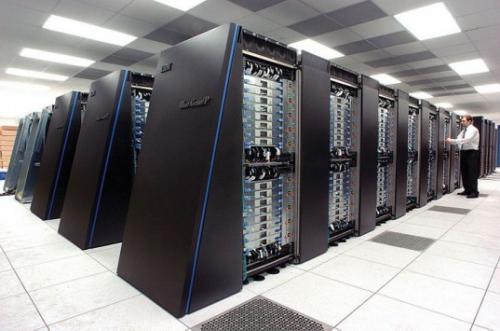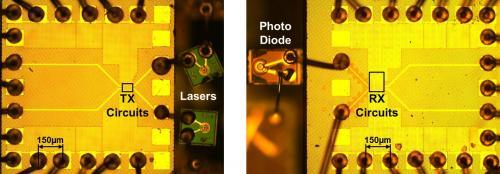This ultra-high-speed digital data link sets energy efficiency record. Say that five times fast.
The supercomputers of tomorrow will be capable of feats never thought possible: model global climate change, run molecular-level simulations of entire microscopic cells, design nanostructures and more, all very quickly. In fact, thee team behind these exascale computers are planning to break previous the energy efficiency record by over half.

They plan to do this, "By combining innovative circuits in IBM's 32-nanometer silicon-on-insulator complementary metal-oxide-semiconductor (SOI CMOS) technology with advanced vertical cavity surface emitting lasers (VCSELs) and photodetectors fabricated by Sumitomo Electric Device Innovations USA (formerly Emcore)," says Jonathan E. Proesel, an IBM team member. They have essentially made an optical communication link operating at 25 gigabits per second using just 24 milliwatts of total wall-plug power, or 1 pJ/bit.

In English: this means that they have increased efficiency by 66 percent all the while cutting the power needed by half.
The team plans to reveal this new prototype cable at the Optical Fiber Communication Conference and Exposition/National Fiber Optic Engineers Conference in Anaheim, California this week.
The supercomputers of tomorrow will be capable of feats never thought possible: model global climate change, run molecular-level simulations of entire microscopic cells, design nanostructures and more, all very quickly. In fact, thee team behind these exascale computers are planning to break previous the energy efficiency record by over half.

IBM's supercomputers. Photo: IBM
They plan to do this, "By combining innovative circuits in IBM's 32-nanometer silicon-on-insulator complementary metal-oxide-semiconductor (SOI CMOS) technology with advanced vertical cavity surface emitting lasers (VCSELs) and photodetectors fabricated by Sumitomo Electric Device Innovations USA (formerly Emcore)," says Jonathan E. Proesel, an IBM team member. They have essentially made an optical communication link operating at 25 gigabits per second using just 24 milliwatts of total wall-plug power, or 1 pJ/bit.

Optical link chip. Photo: IBM
In English: this means that they have increased efficiency by 66 percent all the while cutting the power needed by half.
The team plans to reveal this new prototype cable at the Optical Fiber Communication Conference and Exposition/National Fiber Optic Engineers Conference in Anaheim, California this week.

